Scotch Bonnet peppers pack a punch, right?
Spicy, flavorful, and a tad hard to find in your average grocery store. That’s where we step in. No Scotch Bonnets? No sweat.
There are some pretty awesome alternatives out there that’ll keep your dishes fiery and your taste buds happy.
Jalapeños? Habaneros? Yep, they’re on the list, and then some.
We’re talking easy swaps that won’t leave your recipes feeling left out in the cold. Keep it spicy, keep it simple, and most of all, keep cooking.
Because who needs a trip to the store when you’ve got these hacks up your sleeve?
The 5 Best Substitutes for Scotch Bonnet Peppers
If you’ve never tried a scotch bonnet pepper before and want to experiment with this kind of chili, it is important that you first consider your tastes.
While the scotch bonnet pepper is a hot chili – it isn’t as bad as some very hot chili varieties such as the habanero or ghost pepper.
Below are five possible substitutes for the scotch bonnet pepper:
| Substitute | Key Characteristics | Proper Ratio |
|---|---|---|
| Jalapeño Pepper | Moderately spicy with a slightly earthy and bright flavor | Use 2 jalapeño peppers for every 1 Scotch Bonnet pepper |
| Serrano Pepper | Spicier than jalapeños with a crisp and bright flavor | Use 1 serrano pepper for every 1 Scotch Bonnet pepper |
| Habanero Pepper | Similar heat level and fruity flavor profile to Scotch Bonnet peppers | Use 1 habanero pepper for every 1 Scotch Bonnet pepper |
| Pequin Pepper | Hotter than Scotch Bonnet peppers with a citrusy and smoky flavor | Use 1-2 pequin peppers for every 1 Scotch Bonnet pepper |
| Fresno Pepper | Moderate heat level with a slightly sweet and tangy flavor | Use 1 Fresno pepper for every 1 Scotch Bonnet pepper |
Now let’s dive into each substitute in more detail:
1 – Jalapeño Pepper
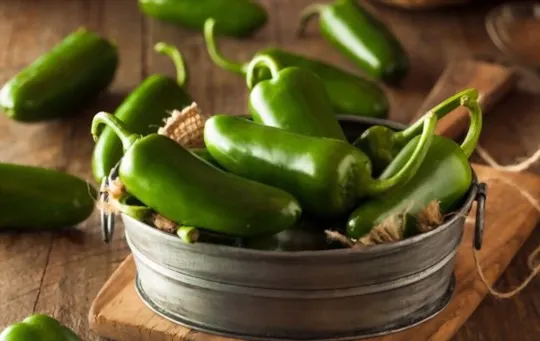
The jalapeño is a cultivar of the species “Capsicum annuum”.
This chili is very common among Mexican dishes – it is also popular in the United States.
The jalapeño has many health benefits, such as reducing inflammation and increasing your body’s metabolism.
It contains capsaicin which acts as an appetite suppressant.
The jalapeño is much milder than the scotch bonnet pepper – but it has a similar flavor.
It’s also important to note that this chili can be consumed raw or cooked in dishes.
It’s great for salsa, guacamole, and hot sauce.
Due to its strong heat level, it is also great for sauces and soups.
- Key Characteristics: Jalapeño peppers offer a moderate level of spiciness with a slightly earthy and bright flavor. While they are milder than Scotch Bonnet peppers, they can provide a similar kick to your dishes.
- Proper Ratio: Use 2 jalapeño peppers for every 1 Scotch Bonnet pepper. Adjust the quantity based on your desired level of spiciness.
2 – Serrano Pepper
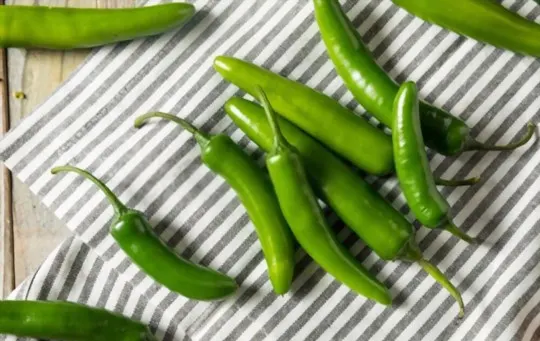
Another chili that can be considered is the serrano chili, a cultivar of the species Capsicum annuum.
This chili typically has more heat than the jalapeño but less than the scotch bonnet pepper.
It’s typically harvested in a green stage and may be eaten raw.
To grow the serrano pepper, it’s crucial to plant seeds indoors 4-8 weeks before the last frost in your area.
This chili can also be dried and smoked, just like the jalapeño.
It has a bit of smokiness, ideal for spicy dishes such as salsa verde or enchiladas.
When dried, the serrano pepper can be consumed as a whole or ground into flakes.
- Key Characteristics: Serrano peppers are spicier than jalapeños and bring a crisp and bright flavor to dishes. They can be a suitable substitute for Scotch Bonnet peppers if you prefer a higher level of heat.
- Proper Ratio: Use 1 serrano pepper for every 1 Scotch Bonnet pepper. Adjust the quantity based on your desired level of spiciness.
3 – Habanero Pepper
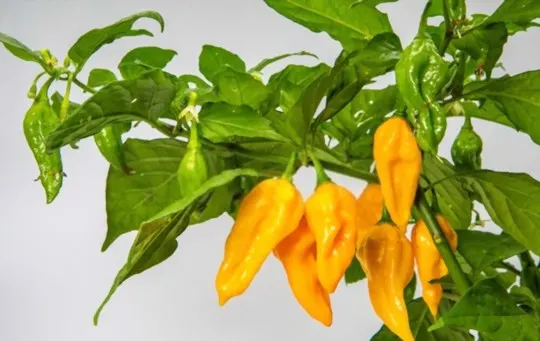
The habanero is a cultivar of the species Capsicum chinense.
It’s very hot and typically measures between 100,000 to 350,000 Scoville heat units.
This chili pepper originated in the Amazon region of South America.
While it is incredibly spicy, it contains large amounts of vitamin A – just like carrots or squash.
This chili is also rich in beta-carotene (pro-vitamin A).
We can use the habanero pepper fresh or cooked.
It’s very pungent and works well in salsa, hot sauces, and curries.
While it turns bright orange when ripe – it may be consumed green.
Depending on the desired heat level, it’s important to note that this chili can be de-seeded before cooking.
The seeds may also be removed after the pepper has been consumed.
- Key Characteristics: Habanero peppers offer a similar level of heat and a fruity flavor profile that is comparable to Scotch Bonnet peppers. They can be an excellent substitute in recipes where the distinct flavor is desired.
- Proper Ratio: Use 1 habanero pepper for every 1 Scotch Bonnet pepper. Adjust the quantity based on your desired level of spiciness.
4 – Pequin Pepper
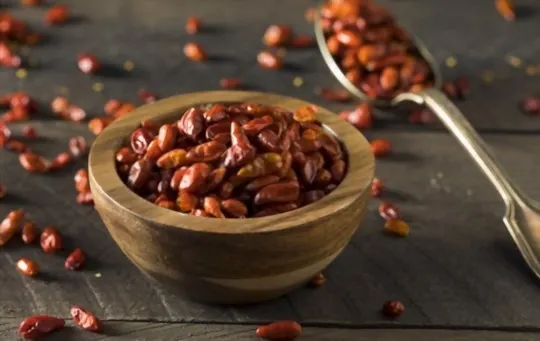
The pequin pepper originates from South America and is a cultivar of the “Capsicum annuum” species.
It’s very similar in appearance to the habanero chili – but typically has less heat.
This chili is typically harvested at a green stage, after which it will be consumed raw or cooked.
When dried, this chili is typically smoked and consumed whole.
It is very popular in China, Mexico, Chile, and Argentina – where it is consumed fresh or cooked in dishes like soups and stews.
The pequin pepper is much more pungent than the scotch bonnet pepper but less spicy than the habanero.
The heat of this chili may be lessened by removing the seeds before cooking.
It is a great option for fresh salsa and hot sauce.
- Key Characteristics: Pequin peppers are hotter than Scotch Bonnet peppers and have a citrusy and smoky flavor. They are commonly used in Mexican cuisine and can provide a unique twist to your dishes.
- Proper Ratio: Use 1-2 pequin peppers for every 1 Scotch Bonnet pepper. Adjust the quantity based on your desired level of spiciness.
5 – Fresno Pepper
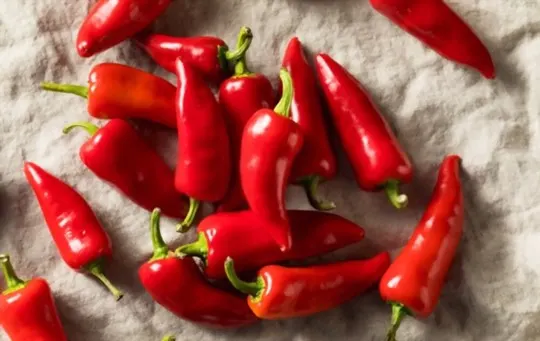
Last on this list of alternatives is the Fresno chili pepper.
This chili is a cultivar of the species Capsicum annuum and typically has less heat than some other chilies on this list.
Because it’s milder, it’s great for people who don’t favor spicy foods but still want that hint of spiciness to their dishes.
It measures between 2,500 to 10,000 Scoville heat units.
The Fresno pepper is typically green but may also be dried and smoked like the jalapeño chili.
If grown in optimal conditions, this chili has a general shelf life of about one year.
- Key Characteristics: Fresno peppers offer a moderate level of heat with a slightly sweet and tangy flavor. They can be a versatile substitute for Scotch Bonnet peppers, particularly in dishes where a milder heat is desired.
- Proper Ratio: Use 1 Fresno pepper for every 1 Scotch Bonnet pepper. Adjust the quantity based on your desired level of spiciness.

Leave a comment